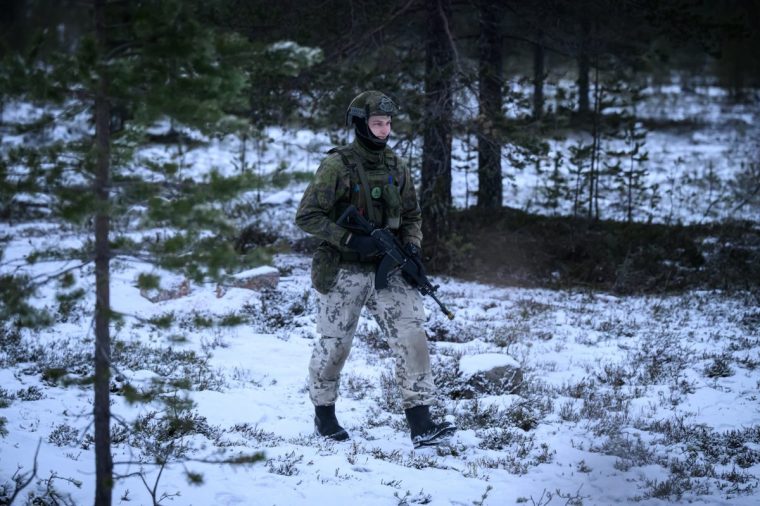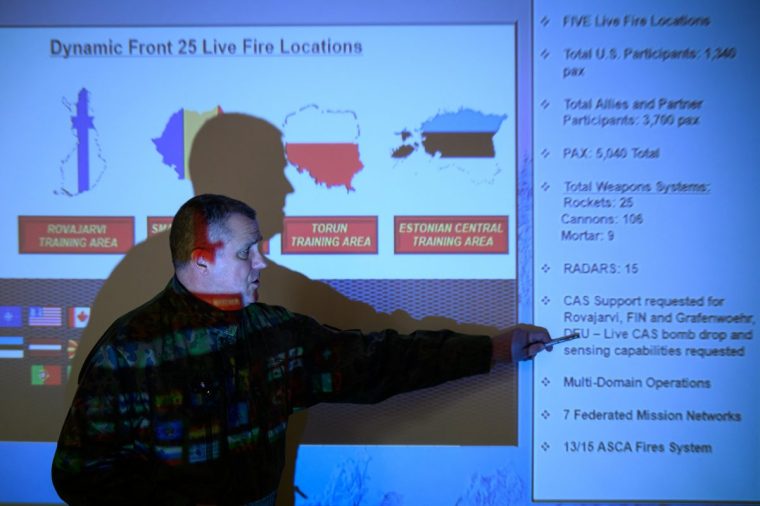Deep in the heart of snow-muffled Lapland a British Army howitzer blasts the Arctic air. We’re near Rovaniemi, 70 miles from the Russian border.
The Archer system being fired by the Royal Artillery for the first time in exercises makes up part of Nato’s largest ever artillery exercise – Dynamic Front.
Up to 3,600 soldiers from 28 nations have been deployed to one of the alliance’s newest members, Finland.
Coming 1,000 days on from Vladimir Putin’s invasion of Ukraine, it is also a flexing of the West’s military muscle and a signal of the interoperability of allied armed forces after Joe Biden gave the green light for long-range ATACMS missiles to be fired inside Russia.
Biden’s permission for the use of US arms will increase the pressure on Sir Keir Starmer to allow UK Storm Shadow missiles to be used on targets inside Russia – which would be seen as a major escalation by the Russian leader.
The British Army’s consignment of 14 Archers, received last year, replaced 32 AS90 artillery systems gifted to the armed forces of Ukraine.
Archers are already on the frontline in Ukraine, with the Swedish government supplying them and the weapon used to destroy a Russian artillery system near the village of Chervonopopivk in May this year.
The Army’s Archer 155-mm guns unleash high-explosive shells or GPS-guided munitions, capable of hitting targets at up to 30 miles away, double the range of the AS90 artillery they’re replacing.
Capable of shoot-and-scoot attacks, the self-propelled 33-tonne guns were branded a battlefield game-changer by a British Army officer at the Rovajarvi firing range
Major Barney Ingram, a battery commander from the Royal Artillery, said: “Standard high-explosive rounds would be very good against personnel, soft-skin vehicles, light armour vehicles and have a mass area effect – those classic big explosions.
“Our new bonus anti-armour has the ability to strike much more heavily armoured vehicles as a seeker munition.
“It depends what munitions you’re firing, but you can, realistically, with this capability, neutralise most targets.
“Against troops in the open, soft-skin vehicles, lightly armoured vehicles, trenches…they will have a really big effect.”
A pound from the first shell shatters the icy silence, shrouding the turret in smoke, before a team of British soldiers, among the 350 deployed for Dynamic Front, unleash a second crack.
Mounted on an articulated hauler, the guns combine long-range precision and rapid deployment to make them a valuable frontline asset.
“What this gives us is an extended range that allows us to out-range our enemies,” said Major Neil Hart.
“It means we can deliver destructive firepower to enable disruptive manoeuvres.
“This is a brand-new bit of capability brought in through rapid means, through the agreement of the Swedish government and the British Government.
“We are learning it day by day. This is our first time that we’re firing this capability on this range. And everyone is super proud to be doing it.”
The importance of artillery on the battlefield has been brutally highlighted by the war in Ukraine.

Speaking in July, a senior officer on Ukraine’s general staff reported that when their armed forces were firing 10,000 shells per day, between 35 and 45 Ukrainian soldiers were killed and up to 300 wounded.
When the daily fire was halved, the death toll shot up to more than 100 Ukrainian soldiers killed each day and at least 1,000 wounded.
Finland, a country with bitter memories of the 1939 invasion by the Soviet Union, joined Nato last year and has the alliance’s second largest artillery capability after Poland.
The country, which shares an 832-mile border with Russia, abandoned its long-held neutrality after Putin’s full scale invasion of Ukraine.
Now, Finland’s troops train alongside with US, British, French and other allies, with Finnish conscripts serving alongside its army’s professional soldiers
A short drive and a treacherous hike over ice-covered paths away, Finnish wheeled 155-mm K9 howitzers are being put through their paces, while a drone buzzes overhead.

Operated by a five-person crew, and with a range of up to 25 miles, the K9s can unload multiple rounds and then rapidly relocate to swerve enemy counter-fire.
The gun’s turret is raised and an ear-splitting boom rattles the snow-covered pine trees, with a volley of two more swiftly following.
Sergeant Antti-Matti Puisto, who is training conscripts, described how K9 crews can be ready to man the artillery systems after three months basic training, and shrugged off the -4°C chill the exercise was being carried out in.
“That would be something that the Nato allies can learn from us, that they come from more southern places to train here,” he said.
“At the moment the circumstances here are pretty easy. It gets a bit not so fun somewhere in -15°C.”
He also hoped Finland joining Nato would help protect the country from future threats.
“The situation in the world has changed during the last 20 years,” he said.

One of the Finnish officers, Captain Ville Mäkelä described it as a “great honour” for Finland to be hosting its first Nato exercise.
“I don’t think [we are] the backbone of the whole Nato artillery,” he said. “We have been preparing for war for decades already, and different types of war than I think the other nations have been doing.
“But I think we have the backbone of the north.”
His tips for British soldiers who may not be used to the sub-zero temperatures? “Drink water, change your socks”.
Cannons, howitzers rocket launchers and mortars are also being used in exercises as part of the Dynamic Front in Estonia, Poland, Romania and Germany.
At a briefing later in the afternoon, Nato’s director of the Finnish drill, Colonel Janne Mäkitalo, outlined the scale of the multi-nation exercise and described how Finland can bring an expertise in defending forest terrain, as well as its firepower.
“Artillery is basically the king and queen of the battlefield, as we have seen from the experience of combat in Ukraine,” he said.

Finland and Sweden’s decision to join Nato came after Putin shattered the stability of northern Europe with the invasion of Ukraine, leaving the Nordic countries feeling endangered.
Despite having a population of just 5.5 million, Finland has a powerful, well-trained army, with a wartime strength of almost 300,000 troops, with Colonel Mäkitalo delivering a clear message to those in Moscow questioning Finland’s decision to join Nato.
“We’ve always had a very good national defence. But it’s not enough that we have 280,000 soldiers in our full-time units, and in addition to that, over 500,000 trained reserves.
“Ukraine had lots of assets before the war, and that was not enough to prevent what has happened.
“And, as our former president of the Republic said, if somebody from Russia would like to ask, why did you join Nato then look in the mirror. Because this is the reason.”


